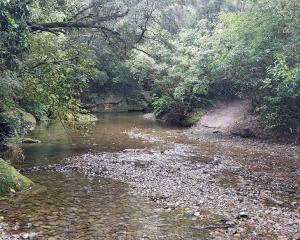
Cars. Perhaps part of the reason we’re so attached to the polluting private car is its therapeutic value.
Music on full-bore, doing 100k, annihilated tarseal streaming out your back, you’re free to emote. Happily warble-sing while starring in your favourite American road-trip movie. Re-do failed conversations, this time with wit and collaborative success. Cry or even grief-wail. Just quietly, there’s even scope to squeeze out a loud cathartic scream. Within safety limits, the whooshing and escape allow a distraction and a privacy not normally available.

And then there’s road rage: "I cruise in my capsule, I’m safe, I’m alone. I survey the world from my mobile throne." Fume as self-righteously as anonymity allows.
A long drive needs broken though and Bannockburn Loop Track offers a broader view beyond one’s own little world.

Gold prospectors used water to wash away surface soil and expose the treasures beneath. The resulting wasteland is a scenic cowboy country near Cromwell, the Bannockburn Sluicings.
"Sluicing" means to wash freely or rinse. Two methods were used.
One was just letting water run down a cliff from a source above, gradually washing the gold-bearing face away. It wasn’t passive though — it still involved digging a water race, a channel, to direct the water to the right spot at the top of the cliff.

Today’s walk isn’t. It’s hilly but is only 3.5km and is level underfoot.
It’s strange country, though. Despite passing evidence of all this water management — piles of rocks and deserted water races — there’s only a trickle to be seen. Dramatic rock bluffs and dry bareness contribute to the feeling that, yes, it was correct to have anticipated for all those years that by 2023 we’d be wandering a post-apocalyptic nuclear wasteland. A little bum bag doesn’t quite cut it, though.

Nearby is the rock-walled remnant of the plus-sized Menzies Dam, with a backdrop of high country hills.
Travelling in the car from the coast it’s easy not to notice the climb inland but up here it’s high. It’s bracing in the winter and baking in the summer, Central as we love it, forming our own Kiwi car-trip vibe.











